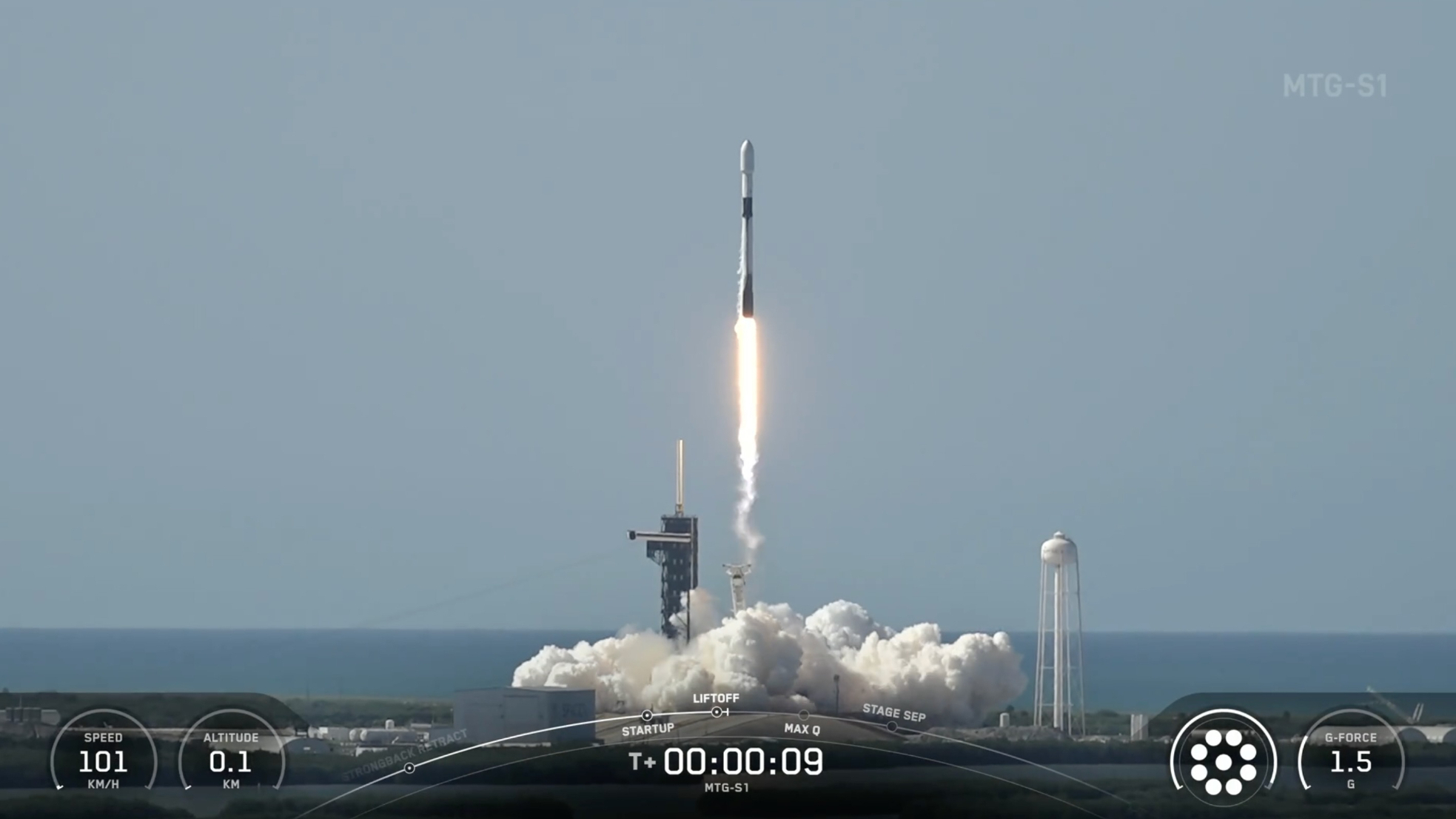Hubble telescope spots a 'Space Triangle' galaxy crash with 'tsunami of starbirth'
The epic tug-of-war is creating a rich area in which new stars are forming.
A head-on collision between galaxies has created a vast, cosmic triangle in deep space glittering with star formation in a new image captured by the Hubble Space Telescope.
The new photo, which NASA released Tuesday (Feb. 22), shows a pair of colliding galaxies known as called Arp 143 arranged in a what scientists described as a "space triangle" that is spawning a "tsunami of starbirth" by sharing gas and dust, according to a Hubble team statement.
"The two galaxies in this system collided head-on, fueling the triangular-shaped burst of star formation," Hubble officials wrote in the image description. "The pair contains the distorted, star-forming spiral galaxy NGC 2445 at right, along with its less flashy companion, NGC 2444 at left."
This wave of starbirth produced by the collision, officials added, appears to be rare due to the triangle shape of star formation visible in the image.
"Part of the reason for that shape is that these galaxies are still so close to each other, and NGC 2444 is still holding on to the other galaxy gravitationally," participating astronomer Julianne Dalcanton, of the Flatiron Institute's Center for Computational Astrophysics in New York and the University of Washington in Seattle, said in the Hubble statement.
Related: The best Hubble Space Telescope images of all time!

Dalcanton added, "NGC 2444 may also have an invisible, hot halo of gas that could help to pull NGC 2445's gas away from its nucleus. So, they're not completely free of each other yet and their unusual interaction is distorting the ring into this triangle."
Breaking space news, the latest updates on rocket launches, skywatching events and more!
Adding complexity to the collision is NGC 2444's propensity to pull away strands of gas from the other galaxy, creating "streamers" of young, blue stars bridging the two galaxies. The streamer stars were created between 50 million and 100 million years ago, but will be stuck in space as the galaxies continue to pull apart from each other.
Another set of young stars, only 1 million to 2 million years old, is also forming in the heart of NGC 2445. Meanwhile, NGC 2444 is only filled with older stars; it lost its gas before the collision occurred, astronomers said.
The collision provides "a fantastic sandbox to understand star formation and interacting galaxies," Elena Sabbi, a scientist at the Space Telescope Science Institute in Baltimore, added in the statement.
Follow Elizabeth Howell on Twitter @howellspace. Follow us on Twitter @Spacedotcom or Facebook.
Join our Space Forums to keep talking space on the latest missions, night sky and more! And if you have a news tip, correction or comment, let us know at: community@space.com.

Elizabeth Howell (she/her), Ph.D., was a staff writer in the spaceflight channel between 2022 and 2024 specializing in Canadian space news. She was contributing writer for Space.com for 10 years from 2012 to 2024. Elizabeth's reporting includes multiple exclusives with the White House, leading world coverage about a lost-and-found space tomato on the International Space Station, witnessing five human spaceflight launches on two continents, flying parabolic, working inside a spacesuit, and participating in a simulated Mars mission. Her latest book, "Why Am I Taller?" (ECW Press, 2022) is co-written with astronaut Dave Williams.
